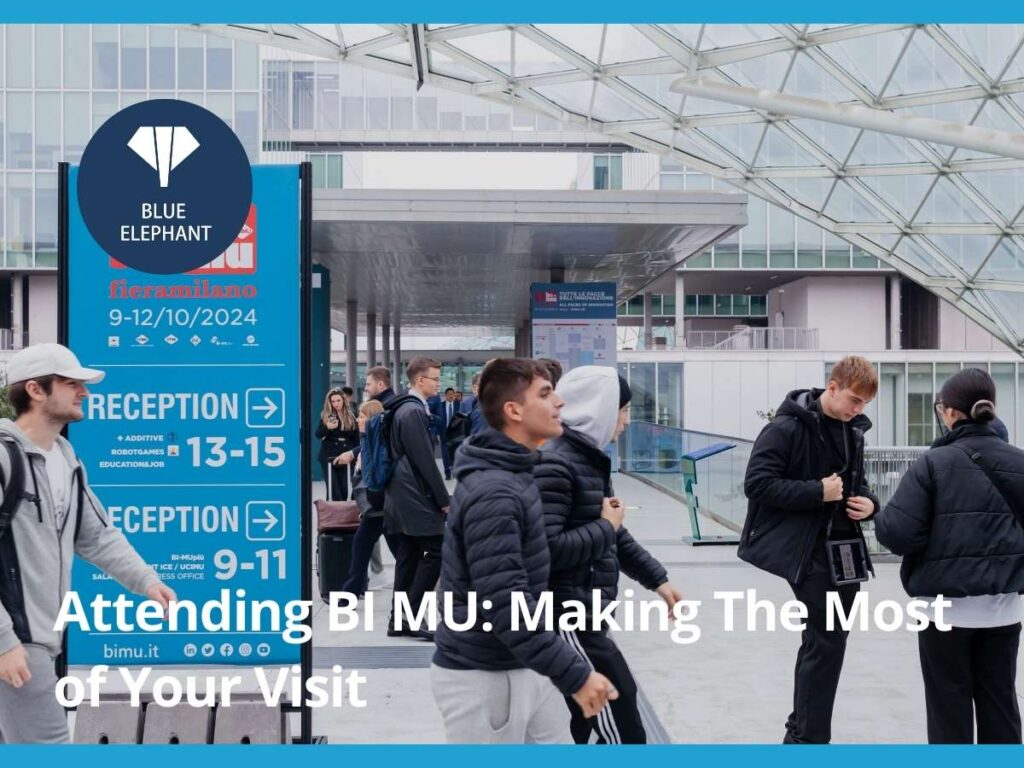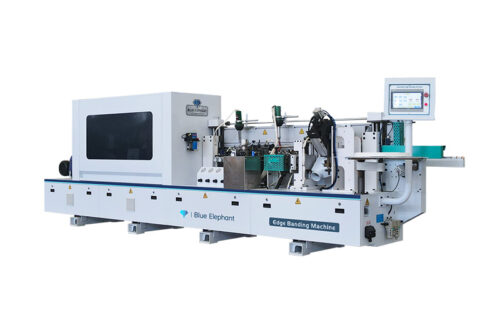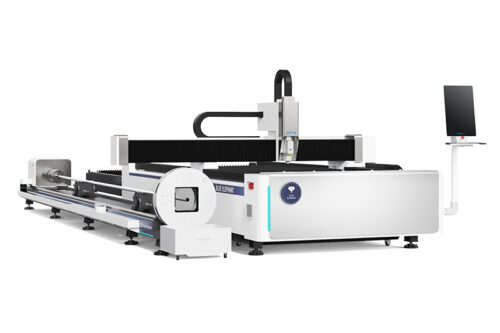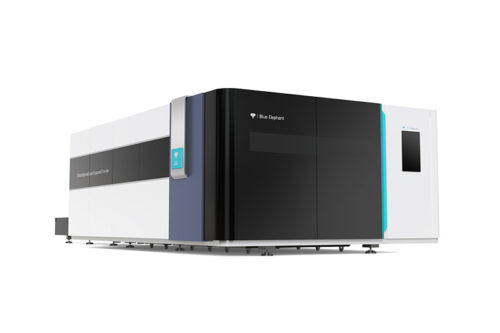The first time I walked into BI MU, I got overwhelmed.
Too many booths. Too little time.
I left with sore feet and no real leads.
Since then, I’ve learned how to do it right. I now attend BI MU with a plan, knowing which machines to look at, which booths to visit, and who to talk to.
I’ve talked with dozens of manufacturers and helped clients, from dealers to hobbyists, find real value at the show.
If you’re heading to BI MU to find machines, parts, or industry connections, this guide is for you. In this article, you’ll learn how to prepare, what to expect, and how to make every minute count.
So let’s get down to it!
1. Registration and Ticketing
The first time I attended BI-MU, I underestimated how big it was. I strolled in just before 11 AM—and instantly regretted it. The line wrapped around the entrance. I stood there thinking, I should’ve come earlier.
Here are the basics:
- Event Dates: October 9–12, 2024 BI-MU runs for four days. If you’re serious about exploring machine tools, automation systems, robotics, or software, don’t expect to cover everything in one quick trip. Spread your visit across at least one full day, or better yet—two.
- Opening Hours: 9:30 AM to 6:00 PM (local time) Doors open at 9:30 sharp. If you’re hoping to beat the crowd, aim to arrive before 9. I like to get there by 8:45. That gives me time to grab a coffee, look over my checklist, and walk in smoothly.
- Venue: Fiera Milano Rho, Milan, Italy This place is huge. It’s modern, organized, but can feel like a maze. There are multiple halls and walking from one to another can take time. Wear comfortable shoes. No joke.
- Hosted by: UCIMU – Sistemi Per Produrre This is the official body behind the event. They represent the Italian machine tool industry and have been running BI-MU for decades. You’re in good hands.
How to Register
Registering online is the smartest move. I’ve done walk-ins before—and I don’t recommend it. Online registration is faster, cleaner, and gives you more control.
Here’s how it works:
- Step 1: Visit the official site – www.bimu.it The homepage will guide you to the registration section. It’s available in multiple languages, including English and Italian.
- Step 2: Choose your registration type
- Visitor: If you’re attending to explore, compare, or buy machines, parts, or tech.
- Exhibitor: If you’re showcasing machines, tools, software, or services.
- Step 3: Enter your business info (for professional visitors)
- Company name: This helps exhibitors understand who you are.
- VAT or tax ID: Needed for business registration in most EU countries.
- Industry details: So organizers can better organize industry-specific badges and stats.
- Step 4: Submit and check your email Once registered, you’ll get a confirmation email. It usually includes:
- A QR code
- A link to download your entry pass
- Visitor tips or maps for the venue
- Early registration perks: If you sign up early, you might get access to express lanes at the entrance or even discounts. It’s not always guaranteed, but it’s worth trying. I registered a month early last year and walked in without waiting.
Entry Requirements and Pass Types
Before you go, here’s what you need to have ready:
- Valid ID: Bring a passport, driver’s license, or national ID. You’ll need to show it when picking up your badge or scanning your QR code.
- Digital or printed pass: I recommend keeping both. I had a friend who couldn’t load his pass because of weak Wi-Fi. I always download the PDF and take a screenshot on my phone. If your phone dies, the printed version is your backup.
- Dress code: Business attire: You don’t need a suit, but don’t show up in shorts and sneakers either. Business casual works best. Think of this as a professional meeting. You might run into suppliers, partners, or future clients.
- Pass types
- 1-day pass: Good if you’re local or already know what you’re looking for
- Full-event pass: Best for those comparing options or exploring multiple product categories
- VIP pass: These may offer access to lounges, networking events, or faster entry points
Most people I know go with the full-event pass. It’s better to have more time than not enough.
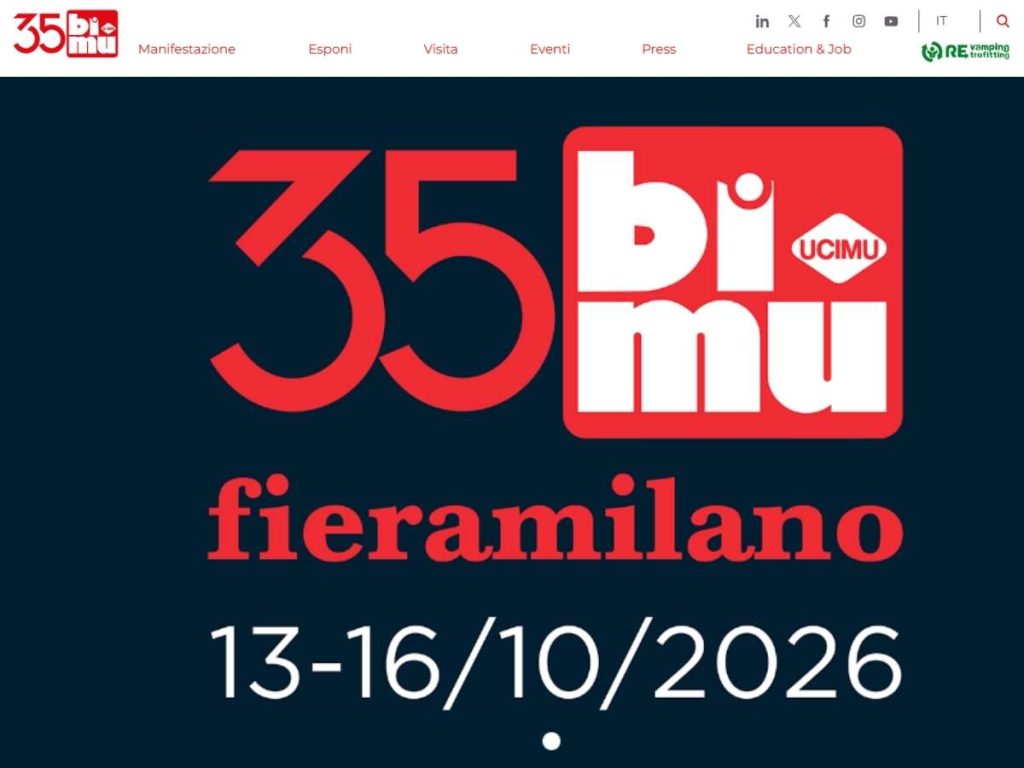
2. Planning Your Trip to BI MU
The first year I went to BI MU, I landed at the wrong airport—then paid too much for a last-minute taxi. Lesson learned.
There are 2 main airports to choose from:
- Milan Malpensa (MXP): This is the bigger one. It’s about 45 km from the venue.
- Linate Airport (LIN): Closer to Milan’s city center. Easier if you’re staying downtown.
Getting to Fiera Milano Rho is easier than it sounds once you plan ahead.
Here are a few good options:
- Train: The Rho-Fiera station is on the Milan suburban train line. From the city center, it’s quick and direct.
- Metro: Take Line 1 (Red Line) to the Rho-Fiera stop. It’s well-marked and connects smoothly with other lines.
- Shuttle buses: Sometimes available from major hotels or airports. Check with your hotel ahead of time.
- Taxi or ride-hailing apps: More expensive, but helpful if you’re arriving late or with luggage. Try to share with a colleague if possible.
If you’re carrying materials or samples, trains and metro can be crowded. I usually go early to avoid the rush.
Accommodation Near the Venue
The year I booked too late, I ended up staying far out. That meant long commutes, higher costs, and less time on the show floor.
If you can, book within walking distance. It saves time—and energy.
Best areas to stay:
- Rho: Closest to the venue. Good for short walks.
- Pero: One metro stop away. Small, but quiet and convenient.
- Milan city center: If you want to enjoy the city after the show. Easy access by metro or train.
Book early. Rooms fill up fast. Prices double closer to the event.
I usually use Booking.com to compare hotels close to the venue. It’s simple to search by location, and I like the free cancellation options. If I want more space or a kitchen, I switch to Airbnb for short-term apartment stays.
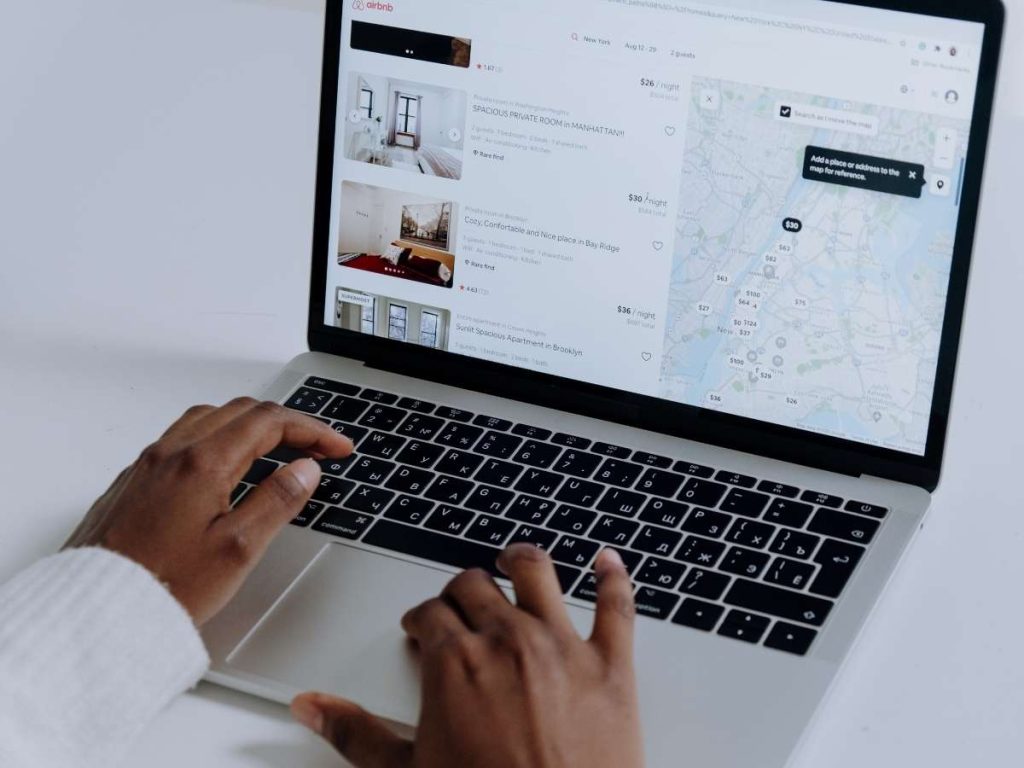
3. What to Bring on the Event Day
One year at BI MU, I showed up with just my phone and a half-charged power bank. By noon, my battery was dead. I couldn’t check the schedule. I forgot booth names. I lost a few good contacts. After that, I started preparing better. Now I bring a small set of essentials that help me stay organized and focused all day.
If you’re visiting BI MU as a dealer, supplier, repair expert, or even just exploring the tech, here’s what you’ll want to carry.
- Business cards or digital contact info: Some people still prefer paper cards. Others like to scan a QR code. I save both in my bag and phone. Either way, having your contact info ready makes conversations smoother.
- Product brochures or a 1-page company profile: If you plan to meet exhibitors or build partnerships, this helps a lot. One page is enough. Just list your company, what you do, and your contact details. Keep it light—don’t carry a heavy stack.
- Notebook and pen—or a table: I take quick notes right after speaking with someone. Just a few lines: who they were, what they showed me, and if I should follow up. If I wait until the evening, I forget the important bits. A tablet works too—for notes, photos, or QR codes.
- Comfortable shoes: BI MU has several halls. You’ll walk long distances without noticing at first. I’ve worn dress shoes before. Big mistake. Now I wear supportive sneakers or lightweight business shoes with good insoles.
- A light bag or backpack: You’ll end up carrying brochures, samples, and maybe snacks. Choose something easy to carry all day. Just make sure it’s not bulky—you’ll be weaving through crowds.
One more thing: Some booths don’t allow photography or video. Always ask before you snap a picture. I once forgot, and the exhibitor wasn’t too happy. Since then, I always check. Most will say yes, but it’s better to be respectful.

4. Navigating the Exhibition
BI MU is exciting but it can be overwhelming if you’re not ready. I’ve walked in without a plan before. I wandered between booths, missed a few key ones, and left feeling like I didn’t get the most out of my day.
Before you even step inside, grab the BI MU mobile app or pick up a printed floor map at the entrance.
Both show the full layout of the venue.
This helps you know where to go and how to get there fast.
The app also lets you filter by category, which is a game changer. You can choose to view only booths for:
- CNC routers
- Spare parts and accessories
- Tooling systems
- Automation and robotics
- Software and digital solutions
That way, you don’t waste time walking from one end to the other and back again.
Tip: Plan your day by zones. If your must-see booths are all in Hall 3, spend a solid block of time there before moving on. Walking less means more time talking to the right people.
How to Stay Organized
Once inside, it’s easy to lose track of who you spoke to. I’ve done it before had a great chat, got a business card, and forgot what we even talked about by the end of the day.
- Make a simple schedule: Example: “Hall 3: 10:00–12:00, Hall 5: 2:00–4:00.” That way, you stay focused and on time.
- Write quick notes after each booth: Use your notebook, phone, or tablet. Just a few words: the person’s name, company, and what stood out.
- Use folders or apps to organize: Keep business cards, flyers, or product sheets in separate folders. Or use an app like Google Keep or Evernote to snap photos and tag them.
By staying organized, you don’t waste time backtracking or re-explaining your needs. You walk away with clear info and know exactly who to follow up with.
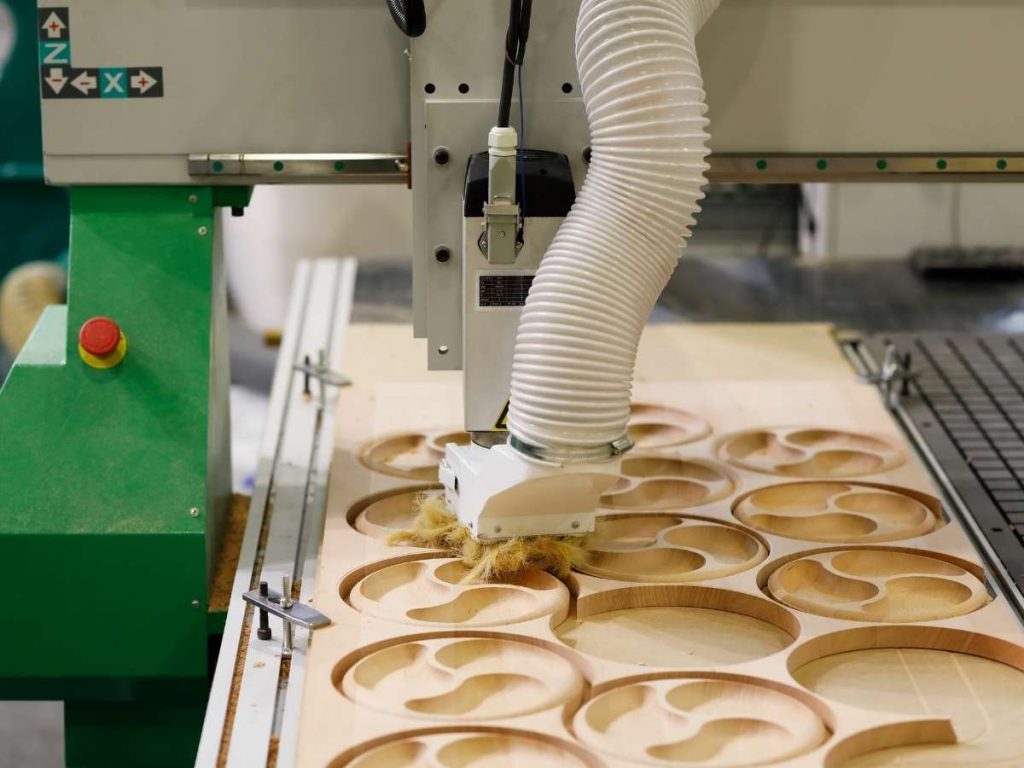
5. Attending Exhibitions & Product Demonstrations
One of my favorite parts of BI MU is the live demos. That’s where machines move from sales talk to real action. You see what they can actually do not just what’s printed on a flyer.
But standing and watching isn’t enough. You need to watch with a purpose.
What to Watch For in Live Demos
Start by focusing on the materials you use in your daily work.
- If you work with wood, pay attention to cut smoothness and speed.
- If it’s plastic, watch how the machine handles melting or chipping.
- For stone or metal, look for vibration control and tool strength.
A machine can look great, but if it struggles with your material, it’s not for you.
Here’s what else to look for:
- Cutting speed and accuracy A fast machine that lacks precision won’t help you much. But one that balances both? That’s worth asking more about.
- Software interface Some controls are easy. Others feel like you need an engineering degree. Watch how the operator sets up the job. Would your team understand it?
- Changeover time See how long it takes to switch between jobs or tools. If it takes 30 minutes each time, that adds up in production.
Ask Questions—and Try Your Project If You Can
I always ask one key question at a demo: “Can I test my actual project or material?”
Some exhibitors will say yes. If they do, it’s a great way to see how the machine fits your exact job. Even if they can’t test on-site, they might offer a follow-up demo or sample run later.
Also ask:
- What maintenance looks like
- How often parts need replacing
- If spare parts are available locally
These details don’t show up in the demo but they matter every day after you buy the machine.
Live demos can be loud and crowded. But if you watch closely and ask the right things, they can tell you everything you need to make a smart choice.
6. Participating in Workshops & Technical Seminars
Some of the most useful things I’ve learned at BI MU didn’t come from machines they came from the workshops. These sessions are where people share real stories, new ideas, and lessons they’ve learned in the field. It’s less sales talk and more honest conversation.
If you want more than just looking at machines, don’t skip the seminars.
Benefits of Joining Sessions
Workshops and technical talks can open your eyes to what’s coming next.
You’ll get a chance to:
- Learn about trends like smart automation, AI in manufacturing, and data tracking tools
- Stay up to date with the latest safety rules, software updates, and global standards
- Hear case studies from real people—dealers, technicians, or factory owners—talking about what worked and what didn’t
One session I attended focused on software updates for CNC routers. I came in thinking I knew the basics, but walked out realizing we were still using outdated processes. Those 30 minutes helped us save time and avoid errors.
Some talks are highly technical. Others are beginner-friendly. Check the session descriptions so you know what you’re walking into.
How to Join
Getting into the sessions is pretty easy, but you have to plan ahead.
Here’s how I do it:
- Check the schedule in advance: The BI MU app and website usually publish the seminar list early. Some sessions need pre-registration, especially ones hosted by big brands.
- Arrive early: Good ones fill up fast. If a talk looks useful, show up 10–15 minutes before it starts.
- Bring questions: At the end, there’s often time for Q&A. I always write down one or two questions during the session. Even if I don’t ask, it helps me stay focused.
These sessions don’t cost extra, and they often offer value you won’t find at a booth. You’ll leave with fresh ideas—and maybe a new contact or two.
7. Maximizing Business Opportunities
BI MU isn’t just about machines. It’s also about people. Some of the best business deals start with a short conversation at a booth. I’ve seen small talk turn into long-term partnerships more than once.
But to make that happen, you need to be ready with a clear plan and the right mindset.
Networking with Purpose
- Introduce your business clearly: Say what you do, who your customers are, and what kind of machines or services you’re looking for. Keep it short. A sentence or two is enough.
- Ask the right questions
- Do you have distributor pricing or partner terms?
- What’s your delivery time and after-sales support like?
- Do you offer support in my country or region?
- Share your timeline and budget: If you’re ready to buy in three months, say that. If you’re still exploring, that’s okay too. Just be honest. It helps the exhibitor guide you better.
Follow-Up Planning
- Take good notes: I write down names, company info, and a short summary of the conversation. If I promised to follow up, I highlighted it.
- Send an email within a week: Don’t wait too long. Keep it simple. Thank them for their time, remind them who you are, and mention what you talked about. If they offered something—like a quote or catalog—ask for it again.
- Request more info You can also ask for:
- A product brochure
- A price list or quote
- A virtual demo or video of the machine you saw
Pro tip: Have a follow-up email template ready before you go. That way, you just fill in the details and send it out fast.
8. Final Tips for a Productive Visit
After a few trips to BI MU, I’ve learned that small things can make a big difference. If you want your visit to be productive, not just busy, these tips will help you stay focused and make real progress.
BI MU can feel like a lot. But with the right habits, you’ll leave feeling like you used your time well.
Start with a Simple Plan
Write down your goals before the show. Think about the machines you want to see, the companies you want to visit, and the questions you want to ask. I keep a short list on my phone. In the morning, I check it before heading into the venue. It helps me stay on track when the halls start to get busy.
Stay Flexible
Not everything will go as planned. And that’s okay. Some of the best conversations I’ve had started by accident walking past a booth or saying hello to someone in line. Make space in your schedule for things you didn’t expect. Sometimes the most useful discovery is the one you didn’t plan for.
Keep Track of Everything
You’ll meet a lot of people. And it’s easy to forget names, details, or what was promised. After each meeting, I write a short note about who I spoke with and what we discussed. I also take photos of booth signs, product tags, or interesting machines. When I get back to the hotel, I review everything and sort what matters most.
Take Care of Yourself
BI MU is exciting but also tiring. I’ve made the mistake of skipping lunch or wearing the wrong shoes. Trust me, that catches up fast. Wear comfortable shoes. Bring water. Pack a snack. Take short breaks when needed. When you feel good, you stay sharp.
Make It Count
This event is full of chances to learn, connect, and grow your business. You don’t need to rush through everything. Just move with purpose, ask good questions, and stay open to the unexpected.
A few simple choices can turn a busy day into a meaningful one. And that’s what makes your BI MU visit truly worth it.
Conclusion
I once walked into BI MU with no plan and left exhausted and empty-handed but that changed when I learned how to prepare.
Now you have that same roadmap, packed with simple steps to help you register, plan your visit, ask the right questions, and make real business connections.
BI MU gives you a chance to grow, but only if you show up with purpose.
Are you ready to make the most of it?
Contact us today and we’ll help you get started the smart way.
Explore Related Resources
For more in-depth knowledge, take a look at these recommended reads. We think you’ll find them useful:
Still haven’t found what you’re looking for? Don’t hesitate to contact us. We’re available around the clock to assist you.


